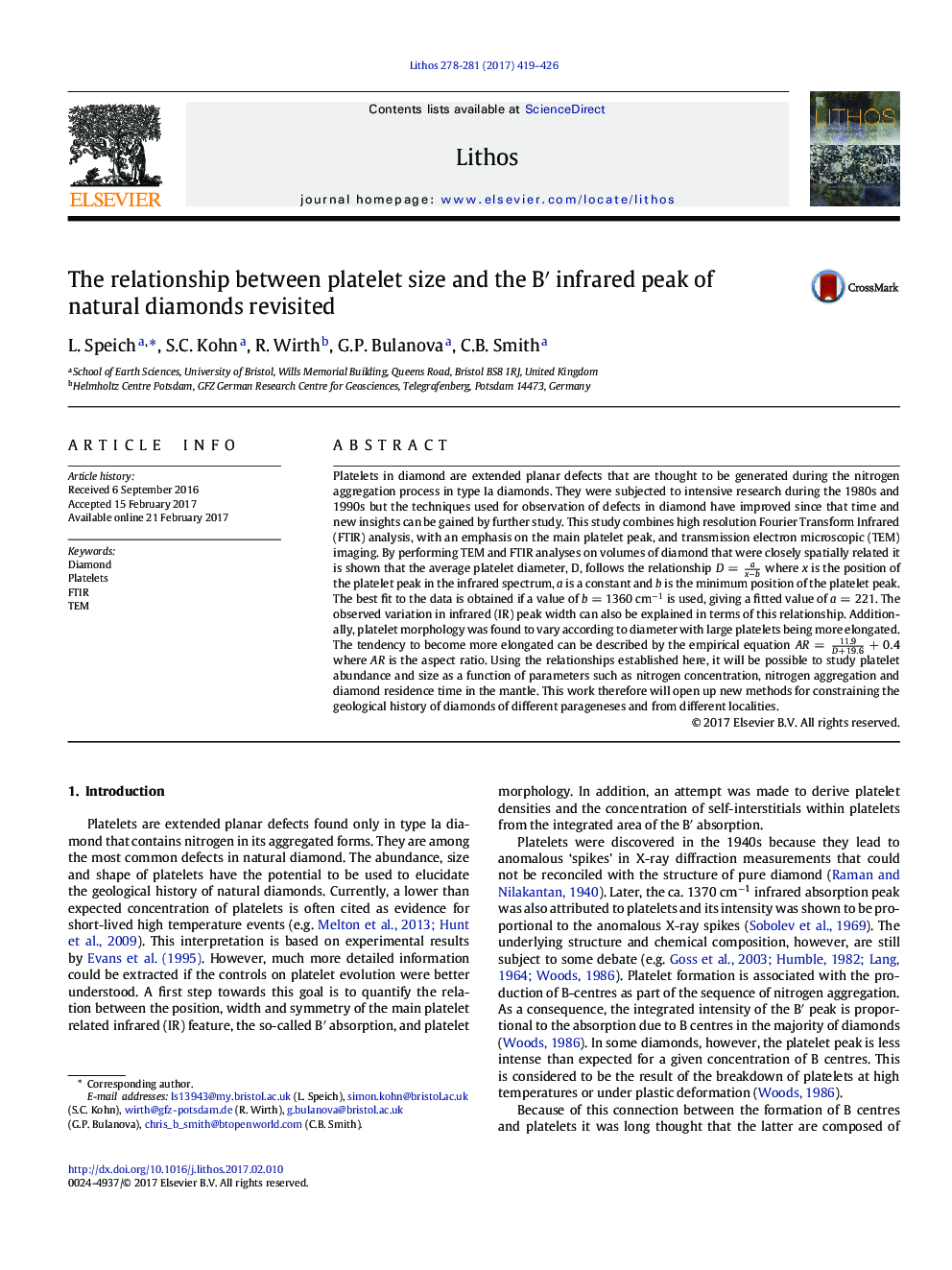| کد مقاله | کد نشریه | سال انتشار | مقاله انگلیسی | نسخه تمام متن |
|---|---|---|---|---|
| 5784178 | 1638632 | 2017 | 8 صفحه PDF | دانلود رایگان |

- We have improved the correlation between the position of the IR platelet peak and the mean diameter of these defects.
- Platelet diameter (D) can be predicted from IR platelet peak position (x) using D = 221/(x â 1360).
- The shape of platelets varies with size; small platelets are roughly circular, large platelets are lath-shaped and elongated.
- Platelet peak width is a consequence of the form of the relationship between platelet diameter and platelet peak position.
- Platelet number densities and sizes are generally consistent with expected interstitial concentrations from N aggregation.
Platelets in diamond are extended planar defects that are thought to be generated during the nitrogen aggregation process in type Ia diamonds. They were subjected to intensive research during the 1980s and 1990s but the techniques used for observation of defects in diamond have improved since that time and new insights can be gained by further study. This study combines high resolution Fourier Transform Infrared (FTIR) analysis, with an emphasis on the main platelet peak, and transmission electron microscopic (TEM) imaging. By performing TEM and FTIR analyses on volumes of diamond that were closely spatially related it is shown that the average platelet diameter, D, follows the relationship D=axâb where x is the position of the platelet peak in the infrared spectrum, a is a constant and b is the minimum position of the platelet peak. The best fit to the data is obtained if a value of b = 1360 cm â1 is used, giving a fitted value of a = 221. The observed variation in infrared (IR) peak width can also be explained in terms of this relationship. Additionally, platelet morphology was found to vary according to diameter with large platelets being more elongated. The tendency to become more elongated can be described by the empirical equation AR=11.9D+19.6+0.4 where AR is the aspect ratio. Using the relationships established here, it will be possible to study platelet abundance and size as a function of parameters such as nitrogen concentration, nitrogen aggregation and diamond residence time in the mantle. This work therefore will open up new methods for constraining the geological history of diamonds of different parageneses and from different localities.
Journal: Lithos - Volumes 278â281, May 2017, Pages 419-426